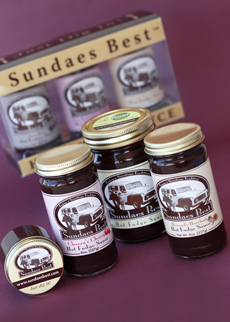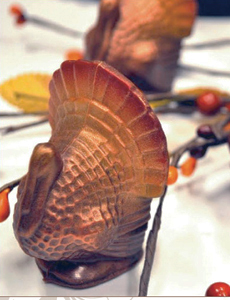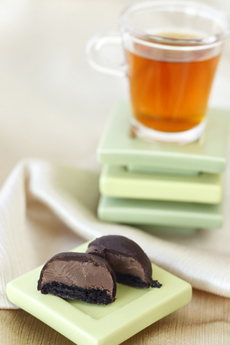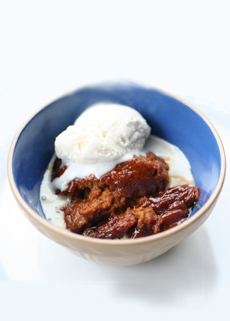|
With regrets to those who don’t eat sweets, we’ve been on a sweet streak over the last week, tasting products for review.
Sundaes Best is a line of hot fudge sauces, specializing in flavored fudge. Apart from the plain dark chocolate Original, the flavors include Cherry, Hazelnut, Java, Mint, Orange, Peanut Butter and Raspberry.
Raspberry is the best-selling flavor, but we preferred Cherry—the flavor of maraschino cherry deftly blended into the fudge sauce. Peanut Butter Hot Fudge is another favorite (PB and chocolate fans will love it), as are Orange and Mint.
While the company uses the finest cocoa, Cabot butter and half-and-half from an award-winning dairy, we preferred the flavors to the Original fudge sauce. It’s less common to find a flavored fudge sauce; and with Sundaes Best, there’s a favorite flavor for every palate to give a special lilt to everything you serve with it.
|
|

A box as a gift, a jar as a stocking stuffer.
Photo by Katharine Pollak | THE NIBBLE. |







